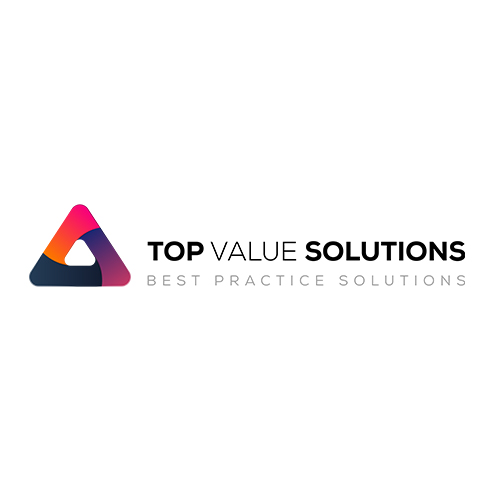About the Client:
IFI is an entrepreneurial business based on state-of-the-art technology in the wood manufacturing industry, at IFI we specialize in customization based on customer requirements producing unique products handcrafted to excellence.
Problem Statement/Definition
Business Challenge
A company operating in a Contabo Data Center is facing challenges in ensuring high availability, scalability, and disaster recovery for their ERP and HR applications. The on-premise infrastructure has limitations such as:
- Limited scalability: Expanding resources on-premises is costly and time-consuming.
- Operational complexity: Managing and maintaining physical servers and networking is resource-intensive.
- Disaster Recovery (DR) gaps: There is no efficient mechanism for real-time backup and recovery of critical data.
- Security concerns: Ensuring data encryption, compliance, and secure access is difficult in an on-prem environment.
Proposed Solution & Architecture
The company is migrating its ERP and HR applications to AWS to leverage cloud scalability, reliability, and security while ensuring continuous replication from the Contabo Data Center.
Architecture Overview
AWS Replication Agent: Installed on the on-premise servers to facilitate real-time, block-level replication of ERP and HR applications. The data is compressed and encrypted before transmission.
AWS Cloud Infrastructure:
- VPC (IFI-vpc): A dedicated isolated network environment with public and private subnets.
- Public Subnets: Used for internet-facing resources.
- Private Subnets: Hosts ERP and HR applications on EC2 instances backed by EBS Volumes for persistent storage.
- Application Load Balancer (ALB): Ensures high availability and distributes traffic across multiple instances.
- NAT Gateway: Provides secure internet access for resources in private subnets without exposing them directly.
- Internet Gateway (IGW): Enables external access to applications through ALB when necessary.
Proposed Enhancements
Auto Scaling: Ensure application instances scale dynamically based on demand.
AWS Backup: Add automated backup policies for better DR and compliance.
Monitoring & Logging: Use CloudWatch, CloudTrail, and GuardDuty for security insights and system monitoring.
Outcomes of Project & Success Metrics
Key Outcomes
- Improved Availability: Cloud-based deployment ensures 99% uptime with multi-AZ redundancy.
- Better Performance: Hosting applications on AWS ensures low latency and fast response times.
- Enhanced Security: Encrypted data replication, private subnets, and NAT Gateway reduce attack surfaces.
- Cost Optimization: Pay-as-you-go pricing allows cost flexibility based on usage.
Success Metrics
- RPO (Recovery Point Objective): Near real-time replication ensures minimal data loss.
- RTO (Recovery Time Objective): Failover to AWS should be seamless with minimal downtime.
- Latency Improvement: Application response time improves compared to on-premises.
- Reduction in Operational Overhead: Decrease in manual infrastructure maintenance efforts.
TCO (Total Cost of Ownership) Analysis Performed
TCO analysis compares the cost of maintaining on-premises infrastructure vs. AWS migration:
| Cost Factor | On-Premises | AWS Cloud |
| Hardware Upgrades | High | None (Managed by AWS) |
| Operational Costs | High (IT Staff, Maintenance) | Reduced (AWS Managed Services) |
| Scalability Cost | Expensive (New hardware required) | Pay-as-you-go, elastic scaling |
| Security & Compliance | Requires additional investments | Built-in security features |
| Disaster Recovery | Manual backup setup | Automated, multi-AZ & multi-region backup |
Result: Migrating to AWS significantly reduces CAPEX (Capital Expenditure) while optimizing OPEX (Operational Expenditure).
Lessons Learned
- Data Replication Latency: Optimizing replication configurations is crucial to prevent performance bottlenecks.
- Network Optimization: Ensuring sufficient bandwidth and optimized routing is necessary to avoid connectivity issues.
- Security & Compliance: Implement IAM roles, Security Groups, and Data Encryption to align with AWS Well-Architected Framework.
- Application Compatibility: Some legacy on-premises applications may require re-architecting before cloud migration.
- Cost Management: Implement AWS Cost Explorer and Budgets to monitor and optimize spending.
Detailed Case Study Breakdown
Customer Profile
- Industry: Enterprise IT & Business Applications
- Location: On-premise Contabo Data Center → AWS Cloud
- Use Case: Migrating ERP & HR applications to AWS for better availability, scalability, and disaster recovery
Technical Implementation
- Step 1: Assess On-Premise Applications – Identified dependencies and selected AWS-compatible services.
- Step 2: Set Up AWS Replication – Installed AWS Replication Agent to enable real-time migration.
- Step 3: Network & Security Configuration – Defined VPC, subnets, Security Groups, IAM roles, and encryption policies.
- Step 4: Deploy ERP & HR Apps on AWS – Launched EC2 instances, attached EBS Volumes, and configured the ALB & NAT Gateway.
- Step 5: Testing & Optimization – Conducted failover simulations, security tests, and performance tuning.
- Step 6: Go-Live & Monitoring – Transitioned workloads, set up CloudWatch alerts, and continuously optimized resources.
Business Impact
- Reduced downtime by 80% compared to on-prem.
- Improved performance with cloud-based compute and storage scalability.
- Enhanced disaster recovery with multi-AZ replication.
- Lower total cost of ownership (TCO) over a 3-year period.
Final Thoughts & Next Steps
- Implement Auto Scaling and AWS Backup to further optimize cost and reliability.
- Monitor usage using AWS Cost Management tools to avoid unnecessary expenses.
- Continuously improve security and compliance by adopting AWS Security Best Practices.




